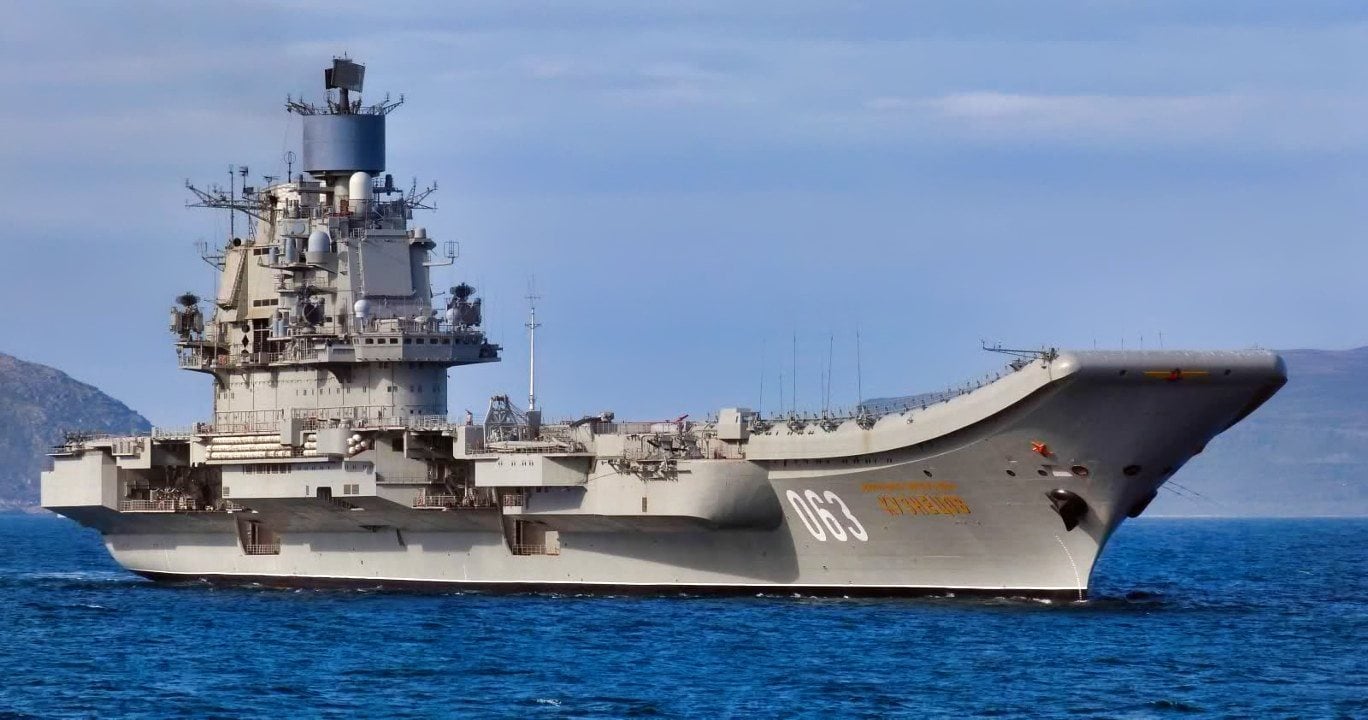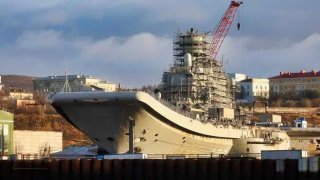Admiral Kuznetsov: Russia's Only Aircraft Carrier Has Not Fought Ukraine for a Reason
Russia’s sole aircraft carrier, the Admiral Kuznetsov, has not participated in the Russo-Ukraine War, as it has been undergoing extensive and costly repairs for several years.
Summary and Key Points: Russia’s sole aircraft carrier, the Admiral Kuznetsov, has not participated in the Russo-Ukraine War, as it has been undergoing extensive and costly repairs for several years.

-The vessel's prolonged maintenance issues have raised questions about its value and purpose. Built partly for prestige, the Kuznetsov symbolizes Russia’s desire to project power and maintain its status as a significant military force. However, its frequent need for repairs and reliance on support crews have undermined its effectiveness.
-As Russia continues to face setbacks in Ukraine, the operational absence of the Kuznetsov highlights the broader struggles within its military infrastructure.
Russia's Last and Only Aircraft Carrier Is On Borrowed Time
Russia’s lone aircraft carrier, the Admiral Kuznetsov, has not participated in the Russo-Ukraine War, despite being one of Putin’s flagship vessels.
Rather, the Kuznetsov has been undergoing costly repairs, for several years, forcing questions over why the Russians wanted the boat in the first place.
Modern troubles for Admiral Kuznetsov
The Russian military has failed to impress during the two-plus-year invasion of Ukraine. Failing to secure meaningful territory, failing to secure the airspace, the operation has underwhelmed – in large part because of underwhelming equipment that the Ukrainian resistance has consistently thwarted.
Several facets of the Russian military have suffered heavy losses and proven ineffective. The Air Force. The Army. And indeed, the Navy. Most notably, the Russians lost the Moskva, the Black Sea Fleet’s premier battleship, in 2022, in what was one of the first indications that the Russian effort would not go as smoothly as hoped.
At least the Moskva was able to participate, however briefly, in the conflict. The Admiral Kuznetsov has not sailed since the conflict began and appears likely to sail near the tail end of 2024. The Kuznetsov’s failure to contribute to the war effort tracks with the problems the boat has had throughout its tenure; the Kuznetsov has often required heavy maintenance and was often reduced to heavy reliance on support crews, including tugboats, making the investment suspect.
Why build the Kuznetsov?
Why did the Russians want the Kuznetsov in the first place? In part because the aircraft carrier confers prestige upon its owner. The aircraft carrier states implicitly that the boat’s owner is powerful and monied.
Only a few of the world’s nations have demonstrated the ability to fund, build, and operate an aircraft carrier – making for something of an exclusive club. A nation like Russia, which is the remnant of the Soviet superpower, and will go to great lengths to posture as though still a superpower, would be especially attracted to fielding an aircraft carrier; for without an aircraft carrier, the Russians would appear as they are: past their prime, over the hill, hollowed out and overly dependent on Cold War tech and equipment.
So, like the neighbor trying to match his neighbor, who recently bought a new sportscar, Russia likely felt something like social pressure to build an aircraft carrier. Then, of course, there are strategic reasons to build an aircraft carrier.
Nothing allows a nation to move around pieces on the geopolitical chessboard quite like an aircraft carrier; an aircraft carrier allows a nation to project airpower around the globe, in an ever-moving way. For any nation with designs on projecting power beyond its borders, the aircraft carrier is a vital tool.

Russia is a regional power, and the Kuznetsov seems built with regional aspirations; the Mazut fuel source is far more limited relative to the nuclear power that can keep modern aircraft carriers at sea for decades at a time. But the Kuznetsov, when working properly, does allow the Russians to move power around the European region. So, naturally, fielding the Kuznetsov did have a strategic upside. Of course, that upside is dependent upon the Kuznetsov being operational.
About the Author: Harrison Kass
Harrison Kass is a defense and national security writer with over 1,000 total pieces on issues involving global affairs. An attorney, pilot, guitarist, and minor pro hockey player, Harrison joined the US Air Force as a Pilot Trainee but was medically discharged. Harrison holds a BA from Lake Forest College, a JD from the University of Oregon, and an MA from New York University. Harrison listens to Dokken.
Image Credit: Creative Commons and/or Shutterstock.

